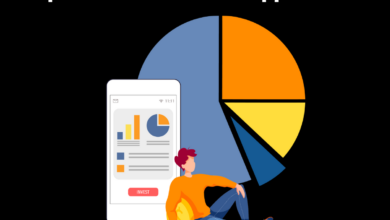Table of Contents
Introduction
In a world where traditional banking systems have long dominated the financial landscape, a new and disruptive technology has emerged, promising to revolutionize the way we handle money and conduct transactions. This phenomenon is known as DeFi, short for Decentralized Finance. Without the need for intermediaries like banks, DeFi offers a transparent, efficient, and inclusive financial ecosystem that puts the power back into the hands of the people. Let’s dive into the world of DeFi and explore how it is shaping the future of finance. So, if you are starting to invest in crypto, you must consider knowing about tbe Scam prevention of cryptocurrency.
What is DeFi?
DeFi is a broad term that encompasses a wide range of financial applications that are built on blockchain technology. Some of the most common DeFi applications include:
Lending and borrowing: DeFi users can lend and borrow money from each other without the need for a bank.
Trading: DeFi users can trade cryptocurrencies and other digital assets.
Insurance: DeFi users can buy insurance against financial losses.
Staking: DeFi users can stake their cryptocurrencies to earn rewards.
Yield farming: DeFi users can pool their cryptocurrencies into liquidity pools and earn rewards from the fees generated by the pool.
Why is DeFi important?
DeFi has the potential to revolutionize the financial system. Here are some of the reasons why DeFi is important:
Transparency: DeFi applications are open-source and transparent, meaning that anyone can see how they work. This makes DeFi a more trustworthy and accountable financial system.
Efficiency: DeFi applications are more efficient than traditional financial applications. This is because DeFi applications do not require the same level of intermediaries and paperwork.
Accessibility: DeFi applications are more accessible than traditional financial applications. This is because DeFi applications can be used by anyone with an internet connection.
How to use DeFi
To use DeFi, you will need to create a wallet that supports DeFi applications. There are many different DeFi wallets available, so you can choose one that is right for you. Once you have created a wallet, you can connect it to a DeFi application. Once you are connected to a DeFi application, you can start using the application’s features.
The future of DeFi
DeFi is a new technology, and it is still evolving. However, DeFi has the potential to become a major force in the financial system. As DeFi continues to develop, it is likely to become more user-friendly and accessible. This could lead to a more decentralized and democratic financial system.
Unshackling Financial Freedom
At the core of DeFi lies the principle of decentralization. Traditional finance often operates through centralized systems, where banks and financial institutions hold significant control over people’s money and financial transactions. With DeFi, this control is decentralized and distributed across a network of computers known as blockchain. This decentralization ensures that no single entity has undue control over funds or decision-making. Instead, financial products and services are governed by smart contracts, self-executing protocols that automatically execute terms and conditions without the need for intermediaries.
The Power of Smart Contracts
Smart contracts are the backbone of DeFi, facilitating a wide range of financial transactions such as lending, borrowing, trading, and more. These contracts are transparent, secure, and immutable, ensuring that all parties involved can trust the process. They eliminate the need for intermediaries and reduce the risk of fraud and manipulation, making financial interactions more efficient and cost-effective.
Access for All
One of the most remarkable features of DeFi is its inclusivity. In the traditional financial system, millions of people around the world are excluded from basic financial services due to various barriers like lack of documentation, geographical restrictions, or high fees. DeFi opens up a world of financial possibilities for the unbanked and underbanked population, providing access to financial tools and services with just an internet connection.
Conclusion
As the world moves towards a more digitally connected and decentralized future, DeFi presents a paradigm shift in the financial landscape. By eliminating the need for banks and intermediaries, DeFi empowers individuals with financial sovereignty and unprecedented access to a wide range of financial services. Platforms have emerged as key players in driving the DeFi revolution, offering users a user-friendly gateway to explore this groundbreaking world of finance. However, users must also stay vigilant and educate themselves about the risks and best practices associated with DeFi. With responsible participation and innovation, DeFi has the potential to reshape finance for the better and create a more inclusive and equitable global financial system.








